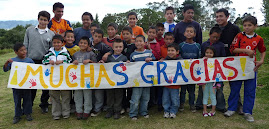In the post titled "New Shelves for the IMC Office" in November, I showed the provisional router setup we have used for the past 5 years.
 |
| The "temporary" or "provisional" router table arrangement we have been using for about 5 years now. |
This setup has served its purpose, but is cumbersome, very limited, and located at an inconvenient height. I have wanted to make a proper, better router table for some time.
So, after the kids began their long vacation away from the farm at the end of November, I began building the new table. I used many of the ideas and instructions from the book
Woodworking with the Router by Bill Hylton.
The first step I took was to build a frame for the table top intended to keep the top surface perfectly flat. For building the frame, I used a hardwood called
sapan, which is not found outside South America.
 |
| The table top frame glued and clamped on the top of our table saw, the most certainly FLAT surface we have available. |
Next, I glued up the sheet materials that we had available for building the table top itself. Although after reading Bill Hylton's book, I would rather have used MDF as the substrate (because it's more reliably flat), I had previously purchased 3/4" plywood and some 1/8" hardboard, so I used those materials instead. Then I glued and nailed on some 3/4" thick hardwood edge banding around the table top, and after drying, trimmed the edge banding to be flat with the plywood.
 |
| Trimming the hardwood edge banding down to be perfectly flat with the plywood surface, using a trimming jig and the router. |
Once both the top and bottom surfaces of the table top were flat, I glued a Formica on the bottom surface and trimmed it to the edge of the table top, before attaching the table top frame to the table top.
 |
| Bottom surface of the table top, covered with low quality (ie. much cheaper) laminate, which seals well, but isn't as abrasion resistant as the top quality Formica I used for the top surface. |
 |
| The finished frame, complete with holes and countersinks drilled to attach the frame to the table top. |
Sorry I don't have any action shots here, but this was a one-person effort - and you probably wouldn't be too excited to see my puzzled face, anyway.... I say puzzled, because I spent a lot of time reading the instructions from the book!
The table top is secured to the frame using 1/4" machine bolts - but with no nuts! Rather the bolts are tightened into threads cut in the plywood/hardboard table top. This was my first experience drilling and tapping threads into wood, but it worked great. Of course, I had to use care in selecting the length of the bolts - and the depth of the countersink, so as to not have bolts sticking out of the holes in the table top...
After bolting the frame to the top, then I proceeded to glue on the good quality Formica laminate to the top surface of the table top. I trimmed the laminate flush using the router with a flush trim bit, then made another pass with a bevel bit, leaving about a 1/4" bevel around the top.
 |
| The table top with the frame attached underneath, ready to begin making the opening in the top for mounting the router and insert plate. |
The process for making an opening in the table top using templates and template guides is interesting, but rather complex, so I won't try to explain it here. I ended up having a special template guide made at a machine shop in Bogotá to make the process work properly. You also need a plunge router for this process, so the Porter Cable 690 that I bought used through Ebay got a nice workout this day.
 |
| Using a template to guide the router in opening a hole into the table top. |
Once the opening for the insert plate was excavated down to the thickness of the insert plate, then I used a jig saw to cut out the blue (Formica covered) material still left inside the routed channel, leaving a shelf to support the insert plate.
 |
| The completed table top, with the router and inert plate mounted in the top. |
 |
| This is a side view of the router table top and frame, with the router mounted. |
Now, all that's left to this project is building a cabinet to support the table top, and a fence to guide boards across the table. Simple, right!
I didn't have time this vacation, but I'm looking forward to the next opportunity to finish the job!


































































